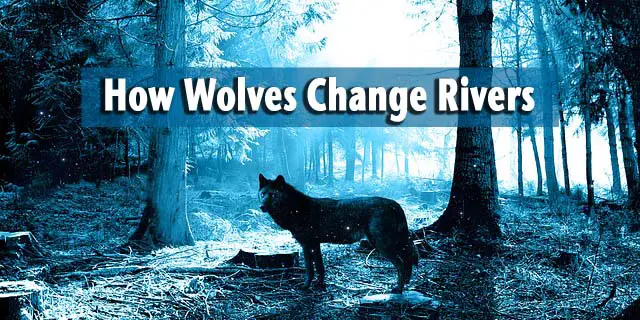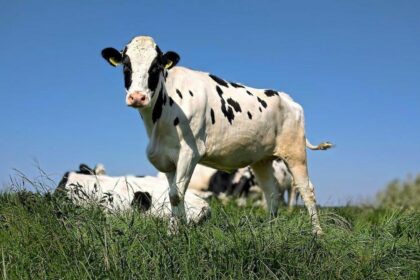Wolves are one of the most well known and iconic species in North America, with a long but storied history in national parks and wide open areas across the country.
These animals are often seen as rough and tough predators that only take away from their environment and never give.
The truth about wolves according to one example, however, is that this keystone predator species can help impact the environment in many more ways than we thought possible, changing the balancing of things quickly while providing life for many other creatures and forms of vegetation.
A documentary produced by the YouTube Channel Sustainable Human showcased the wolves’ impact when it told the story of how wolves changed things at Yellowstone National Park.
“One of the most exciting scientific findings of the past half-century has been the discovery of widespread ‘tropic cascades,’” an “ecological process that starts at the top of the food chain and tumbles all the way to the bottom” as the narrator explains it.
“We all know that wolves kill various species of animals, but perhaps we’re slightly less aware that they give life to many others,” he continues in the video below.
In Yellowstone, wolves returned in 1995 after seventy years in other areas, and the impact was both immediate and profound.
How Wolves Change Rivers
For starters, the wolves radically changed the behavior of deer and elk in the area.
With their only consistent predator back in action, these animals were forced away from valleys, gorges, and other areas where they were overgrazing and taking away much of the vegetation that trees need to thrive, and smaller animals depend on for sustenance and cover.
The wolves also reduced local coyote populations by about half, allowing for more antelope, beavers, and foxes to enter the picture.
These smaller animals all add to the diversity and livelihood of the forest as well, especially beavers.
The beavers began to work their magic by building dams and changing the way the rivers flowed, providing safe places for more reptiles, amphibians, and small mammals like otters to thrive as well.
Throughout it all, the immense changes catalyzed by the wolves changed the way the National Park was seen, and made for a healthier and more vibrant environment for all creatures, instead of just deer, elk and coyotes.
The video has been watched over 43 million times as of the writing of this article, and is perhaps one of the most well liked of its kind.
Check it out below, and keep this in mind the next time you think of these beautiful canines!
Scientists Respond to Wolf Documentary’s Simplistic Claims
Despite the popular nature of the documentary, some scientists including field biologist Arthur Middleton have taken issue with the documentary’s claims. Middleton said that they are not true according to a New York Times article.
Other ecologists have said that human hunting, cougar and mountain lion hunting, bear hunting all helped to reduce elk numbers along with the wolves.
“It was important to put the wolves back, but it didn’t change the willows much,” Colorado State biologist Tom Hobbs said about the video.
“It hasn’t even come close to recovery,” Hobbs added, saying that an increased water supply created more life in the area than wolves ever did.
Since these claims, the authors of the original report have fired back, however, stating that their assertions were correct.
“It wasn’t until wolves were returned that we got this reshuffle in what elk were doing and we began to see improvement in plant communities and streams.
“This is the first study showing improving stream morphology in Yellowstone’s northern elk range, or anywhere else in the U.S. as it relates to the return of a large predator.”
The wolves may not have done it on their own, but they certain played a role, namely preventing the elk from munching down the tops of trees to smaller heights allowing for less tree canopy growth, among other factors.
“Overall, results were consistent with a landscape‐scale trophic cascade whereby reintroduced wolves, operating in concert with other large carnivores, appear to have sufficiently reduced elk herbivory in riparian areas to initiate the recovery of Blacktail Deer Creek’s riparian plant communities and stream channels,” the scientists wrote.





